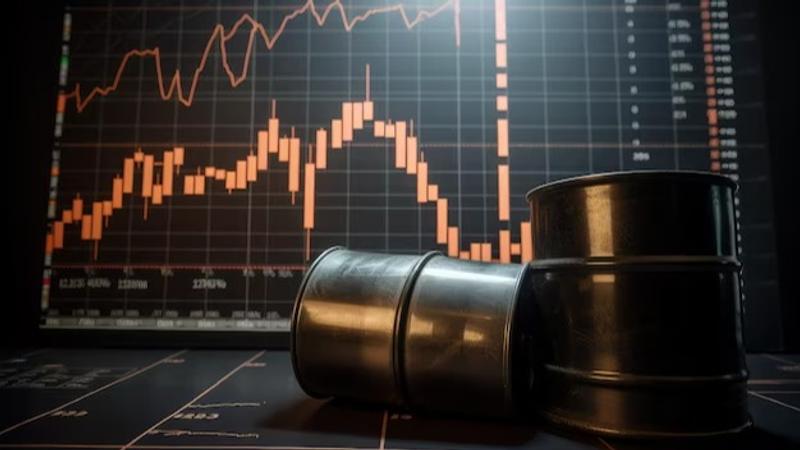Published 12:01 IST, December 9th 2024
Saudi Arabia Cuts Oil Prices After OPEC+ Delay - Details
The price is the lowest premium for Arab Light since January 2021, at a time when global demand was weak as a result of the COVID-19 pandemic.

It’s always tempting to try and over-analyse changes in the crude oil market and Saudi Arabia’s decision to cut its official prices for Asian customers to the lowest level in four years is one such example. Saudi Aramco, the state-controlled oil company of the world’s largest oil exporter, said on Sunday it is lowering the official selling prices (OSPs) for refiners in Asia, which buy about 70 per cent of the kingdom’s crude. The OSP for the benchmark Arab Light grade for January-loading cargoes was lowered to a premium of 90 cents a barrel over the Oman/Dubai average, down 80 cents from a premium of $1.70 for December. The price is the lowest premium for Arab Light since January 2021, at a time when global demand was weak as a result of the COVID-19 pandemic.
Saudi Oil Price Low: What Market Analysts Have To Say?
Market analysts often view the lowering of Saudi OSPs as a sign of two things, namely weak demand and an attempt to regain market share from competitors. There is certainly a case to be made for both of these factors. There is little doubt that demand in Asia has been disappointing in 2024, with it all but certain that the continent’s imports will decline this year from 2023. For the first 11 months of 2024, Asia’s imports were 26.58 million barrels per day (bpd), according to data compiled by LSEG Oil Research. This is down 310,000 bpd from the 26.89 million bpd for the first 11 months in 2023.
However, there are some signs that demand has picked up, with LSEG data showing November imports at 27.05 million bpd, the highest in six months and up almost 1.0 million bpd from October’s 26.06 million bpd. The gain was led by China, with LSEG showing the world’s biggest oil importer saw arrivals of 11.77 million bpd in November, up from 10.57 million bpd in October. Saudi Arabia’s decision to cut OSPs for January is to try and ensure that this nascent recovery in demand continues. The lower OSPs may reflect that the US dollar has strengthened in recent weeks, meaning that lower oil prices in dollars aren’t fully reflected in local currencies in key Asian buyers.
Saudi Oil Price Low: Fluctuating Currency
Since the recent peak in Brent futures of $81.16 a barrel on October 7, the price in US dollars has declined 12.4 per cent to end at $71.12 on December 6. However, in Chinese yuan terms, it is only down 9.7 per cent over the same period and in Indian rupees by 11.6 per cent. Saudi Arabia eyes bigger market share The view that Saudi Aramco is trying to regain market share by lowering OSPs is also popular but not necessarily one that stands up to scrutiny. Saudi Arabia is the biggest supplier to Asia and has seen its market share recover in recent months.
From a low of 16.7 per cent of Asia’s imports in August, Saudi Arabia’s share has risen to 20.8 per cent in September, 18.3 per cent in October and 21 per cent in November. Russia, the second biggest supplier to Asia, has seen its market share go from a 2024 high of 15.8 per cent in June to 14.5 per cent in September, 15.7 per cent in October and just 12.9 per cent in November, according to LSEG data. The biggest factor driving Aramco’s decision to lower its OSP is the need to keep its oil at competitive levels versus competing grades.
This isn’t an issue for the bulk of Middle Eastern crude, which tends to price off movements in Aramco’s OSPs. However, it is more of a factor for crudes that price against Brent, such as those from West Africa. The premium that Brent commands over the Middle East benchmark Dubai has been narrowing in recent months, meaning Brent is becoming cheaper on a relative basis. The premium Brent-Dubai crude’s Exchange of Futures dropped to $1.08 a barrel on December 6, the lowest since September 30 and down from a recent peak of $2.39 on October 4. By lowering its OSPs for Asia, Saudi Aramco keeps its crude pricing more competitive with grades from exporters such as Angola and Nigeria. (Reuters)
Also Read: Syria Crisis: Will India's Exports Be Affected? Apex Trade Body Decodes | Exclusive | Republic Business
Updated 15:08 IST, December 9th 2024